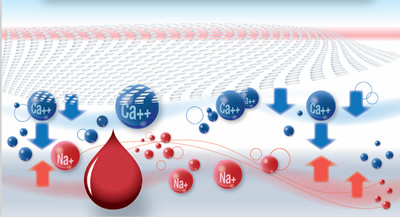
Email: info@medicalaccess.co.uk


For centuries, sailors have used broken algae to heal their wounds. They noticed that, when broken, algae release a substance that prevents the liquids from leaking out of the plant. Sailors used broken algae directly on their wounds to stop the bleeding. In the 19th century, an English scientist, Edward Stanford, identified the active ingredient: alginic acid.
In 1949, Laboratoires Brothier (Stop Hémo-H’s manufacturer) pioneered the use of this scientific breakthrough in healthcare. The natural properties of algae are transformed into fibres to make hemostatic and healing products.
Of the 250 species of brown ‘laminaria’ seaweed, Brothier have identified that Laminaria Hyperborea has the most effective hemostatic and healing effects. It grows exclusively around the shores of Norway and is now farmed there by Brothier.
A unique series of chemical processes are used to change the physical form of the calcium alginate into a fibre swab. When this swab comes into contact with the sodium citrate in the patient’s blood it returns to the gel-like consistency of the original seaweed.
Large diameter fistula needles, high blood pressure in the AVF plus the anticoagulant treatments given to enhance HD treatments lead to an increased risk of Hémorrhage upon needle removal. Prolonged compression following needle removal can lead to Stenosis, Thrombosis or Necrosis of the puncture site and possible damage to the underlying fistula
Stop Hémo-H doesn’t require pressure to achieve hemostasis, thus reducing the risk of necrosis etc.
Stop Hémo-H automatically releases calcium ions when in contact with blood causing an acceleration of platelet aggregation. Stopping bleeding faster, particularly in patients with compromised clotting cascades.
Stop Hémo-H reduces risk of infection and promotes wound healing. A recent study at Bristol University showed that:
‘This flash of calcium signal goes on to activate an enzyme known as DUOX that synthesises hydrogen peroxide, which, in turn, attracts the first white blood cells to the wound. This white blood cell invasion, which is initiated during our inflammatory responses, is needed to kill off invading microbes and stop the onset of septicaemia following tissue damage’.
Stop Hémo-H gelifies when in contact with blood, avoiding adherence to the wound and disturbing the clot. The gel also helps to reduce pain at puncture site.
As a 100% natural product, coming from algae, Stop Hémo-H is non-allergenic and well tolerated.

When in contact with blood, Stop Hémo-H frees its calcium ions (Ca++) in exchange with sodium ions (Na+) of the blood.
This process is called IONIC EXCHANGE.
Calcium is factor IV of the coagulation cascade. Any deficiency in calcium ions will negatively impact the coagulation process. The release of Calcium ions directly at wound site accelerates platelet aggregation.
